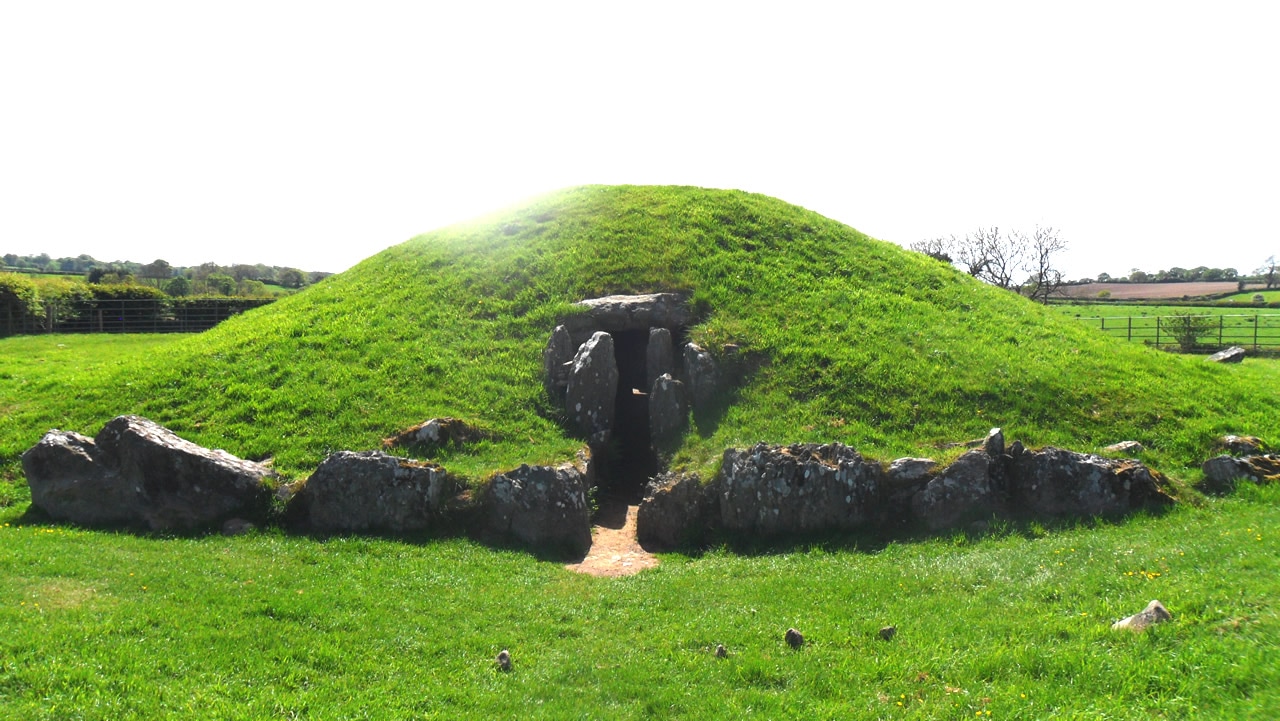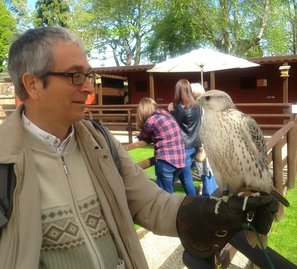Knowledge: on the (l)edge of knowing. The mantra through much of society in recent decades has been ‘Knowledge is Power’. Few would deny that having access to and a handle on the wealth of information that abounds in today’s data-rich world has benefits. But it has downsides too. How many of us have not been swamped by the sheer volume of data now at our figure-tips? And that’s just the information we choose to look at! And where does fake news fit into this? The boundaries between fact and fiction, meaningful evidence and biased opinion is getting ever more blurred. We have all this ‘data’, if not freely available over the internet, then in some cloud or virtual storage available for a suitable fee. Is it actually improving our quality of life? Are we, humans individually and collectively, happier? Few that I speak to would say so. On the contrary. Take into account all the ailments, both personal (e.g. obesity, dementia to mention but two of a myriad of disabling conditions) and of society (extremism, anti-social behaviour for example) and there is little sign of the data revolution and age of knowledge making life better for many of us . . . if any. Perhaps we have it all wrong. There are a number of problems with data and knowledge:
Data, knowledge and the facts and theories that are conventionally taught tend to be conceptual, abstract. Indeed, Higher Education in particular prides itself on-being objective and detached! What all this means is that what is being taught goes into our heads as disconnected bits of information with little, if any, bearing on students’ personal lives. Let me illustrate this with an example: rain. We all know what rain is don’t we? How do you know that? The chances are that your understanding of and appreciation of the water that falls from the sky has much more to do with first-hand experience of it than what you’ve been formally taught. And how well do you know rain? Have you experienced a dreek day in Scotland, or a tropical storm in Malaysia . . . or watched rain-drops trickle down a window-pane, or . . . And so it is with everything. From liquid nitrogen to love, from fear to pheromones. These are just words. They are not the thing itself. All of these features, and our focus on them, have created a big problem: our minds are full of abstract ideas, descriptions, theories, beliefs and concepts. Whilst in another part of our mind, as we go about our daily life, we experience these things we think we understand. But all too often the two sets of mental images: the theory and the reality, don’t match up. The result: confusion, frustration and a sense of dis-ease. With so many dubious features to knowledge, what is the alternative. What would overcome the above limitations? One small step . . . from knowledge . . . to knowing a) For our access to information to be ‘of the moment’. If we could ‘know’ the truth about our particular situation and tap into the details of the immediate ‘here and now’ reality of most relevance to us, as we make a particular decision, then we could make that decision based on a different quality of knowledge. If our access to information were genuinely free of bias, of manipulation and take into account every pertinent fact and nuance, then far better decisions could be made . . . they might even be more inclusive, resulting in actions more beneficial to all. How? By being more present, by living in the ’here and now’. The recent, rapid increase in individuals taking up some form of mindfulness, meditation or self-healing is no coincidence. They, know, at some level, that they have to get ‘out of their heads’: meaning detaching from the if-ing, but-ing rational mind and related emotional attachments. b) We become more discerning, more able to sort the wheat from the chaff, not being swayed by irrelevant arguments or emotional blackmail. We becomes more self-reliant in selecting, interpreting and analysing data. The ability to reach and act on our own conclusions is key to feeling in control of our own destiny with consequential benefits to our sense of well-being and fulfilment. Becoming present, more aware of the reality beyond our sub-conscious, conditions reactions, also achieves this objective. c) By becoming more reflective and recognizing the value of time spent in contemplation: giving our minds change to assimilate the huge amount of knowledge and experiences that so often fill our days and years. Peace of mind and a feeling of being at peace with the world happens when our inner view of the world (what we think it is, our internal model of it) match the one we experience through our senses. But how often is that the case? Rarely! Each of these features describe an alternative consciousness, a more wholistic way of using our minds. Complementing our rational consciousness, it enables us to integrate our intellectual perspectives, personal experiences with a deeper, inner awareness of our place in the world. From this state of mind we are a connected part of the organisations and communities of which we are part. With this state of mind we can truly engage and have a positive impact in the world. This is knowing, as opposed to knowledge. This is what leading educators are beginning to come to terms with: as I’ll discuss in a future blog. This article has been intentionally ‘easy reading’. The academic background, with extensive references, can be found in my PhD research.
0 Comments
Whatever job we do, the chances are that we’re under so much pressure that we’re expected to, or think we need to, multi task. But how many of us are actually any good at it? And is it an effective approach to a bursting in-tray and numerous demands on our time?
What do we mean by multi-tasking? Doing a number of tasks at the same time! Yes, but how many? And over what time period? Being good at multi-tasking means knowing what to do when. Easy to say, but not so easy to do! Being able to select the right task at any given moment and to know when to drop that and start something else requires wisdom . . . or at least a high level of awareness:
Responding to that plea for help Consider a typical example: we’re busy on one job and the phone goes. A colleague wants us to drop everything and see to another ‘problem’. How often do we just react to such a situation depending on who’s asking (or telling) and our reaction to it? Effective multi-tasking, wise-working, is about responding to such situations, rather than reacting to them. In just a few mindful breaths we can, for example, ascertain that our caller’s ‘problem’ is no more than them panicking. So we, calmly and firmly, help them to see the bigger picture and ‘loosen up’. Within a couple of minutes we’re back at our task. Win-win. As with good quality, it’s all about ‘fitness for purpose’. For example: Knowing when to stop Whether multi-tasking or working normally, a major block to efficient and effective working is perfectionism. Working with wisdom is about recognising when we’ve done enough to satisfy the here and now need. Wise working, particularly in a multi-tasking environment, is about knowing when to say “No”, not just to your boss or colleague, but to that inner voice. There is no wisdom in reacting to the fear of not getting a job done ‘properly’. On the contrary: when we’re worried our efficiency decreases, because the mind gets caught up in ‘what if . . .’ recriminations. That’s no good for our health or our company’s profits! So what we need to multi-task effectively is peace of mind: a mind detached from shoulds, fears, expectations, guilt and so on. At the personal level An increasing number of us are turning to some form of mindfulness, meditation or self-healing to help achieve a calmer mental state. We may be reasonably successful at obtaining a relaxed mind, free of clamour, on a beautiful mountainside or in the quiet of our bedroom, but in a busy office? This is the paradox of working with wisdom: it’s precisely because it’s so hard to achieve that we most need to adopt a wise approach and develop a tool-box of appropriate practices to help us stay aware and stay present in our day-to-day working lives. For an organisation From a corporate perspective, it’s a matter of culture. The wise business recognises the value of reflection and contemplation. For example:
Contemplative Life provides a central hub that brings myriads of contemplative practices and communities under one umbrella and makes it easy for you to find practices of interest and connect with others of like mind. Working with Wisdom provides mentoring to enhance your personal wise working and assessment and training of your organisation to foster wise working at a corporate, cultural level.  Is it my imagination or are most organisations looking for more and more ways of being more efficient and more effective? Looking for savings here, making cuts there? It seems to have become endemic, an automatic reaction to any poor results or desire for greater profits. But where is the wisdom in all of this? Walking in the mountains, having lost your water bottle, how would you drink from a refreshing mountain stream? Would you, as quickly as possible, grab what you could? No, you’d be even more thirsty and frustrated! You’d carefully cup your open hands together and allow the water to fill them. Then you’d gently raise your hands to your mouth and, carefully, pour. Gently, carefully. That’s the wise way. In any operation. “OK”, the slightly wiser QA man says “let’s get that down in some procedures”. And so instructions are written: “Cup hands gently together, being careful not to leave any gaps between the fingers”. If the author is at all aware, they’ll even include a photograph to illustrate the intent. The instructions are issued and results monitored. The feedback is not encouraging:
The wise man sitting by the stream smiles amiably at the attempts to follow procedures. “Watch”, he says. The puzzled, frustrated and thirsty students stand on the bank as the wise man finds a suitable place to kneel. He cups his hands together seeming to offer a prayer as he does so. Gentle he immerses them into the bubbling flow and carefully he removes his hand in one flowing movement as he lowers his mouth to meet them. For effect he slurps the water in noisily. “Ahhh!” he exclaims with a beaming smile. “How?” the students demanded. He shrugged his shoulders. “It is not for me to teach or explain” he said . . . and walked away. For the next few hours the students tried and tried again. Eventually one took his instructions and began folding the paper: he’d remembered his origami hobby from a child. Paper cup anybody? Image: Cwm Idwal by Keith Beasley  In my last blog I described the KISS principle and how simplicity can be a useful trait to fall back on when intent on making processes more effective and efficient. This time I’m applying the principle to decisions made when designing a new piece of educational material. Just what and how much content is required in a course for it to really get across a given topic? In Teaching and Learning (T&L) theory we are lucky to have a ground-breaking insight and approach that neatly applies the KISS principle: Threshold Concepts (Meyer and Land, 2003). The gist of Threshold Concepts is that in many topics there are just one or two core ideas that are essential to its understanding. Once a student has crossed that threshold of understanding and grasped the essence of these key concepts, then everything else follows naturally. What makes this easier said than done is that often these key concepts have a troublesome aspect, some feature that seems illogical and/or counter intuitive. The trick to designing a good course thus comes in identifying such threshold concepts and finding ways to helps students cross that threshold. Often this will require non-standard T&L techniques: lecturing to a PowerPoint presentation just won’t do the job. Take, for example, learning to ride a bike. The threshold concept would be balance: unless and until the learning cyclist has grasped the notion of balance enabled by momentum, they’re likely to keep falling off. The only way to teach this is to do it: supported by stabilisers at first, but by letting go, by feeling the wind through your hair. Similar experiential approaches might apply to a wide range of subjects, from mindfulness to baking a cake, for example. But the threshold concept of threshold concepts is clear: keep it simple! Identify the one (or 2) key concepts and find a way of teaching them that helps students over whatever it is about that concept that some may find troublesome. Sometimes it’s as simple as emphasising that less really is more. Less detail, less theory, less complications: just the simple essence. This is also the underlying essence of ‘Working with Wisdom: sometimes (often!) we are apt to think too much, to believe that the rational mind has all the answers. Wisdom doesn’t rely on complicated theories or more explanatory words. It invites us to step back from a problem, observe, feel what’s going on and ascertain the essence of the moment. KISS: Keep It Simple, Stupid, is a useful reminder to do just that. Beyond the image This is Bryn Celli Ddu Burial Chamber on Anglesey (Wales, UK), a Neolithic tomb that, like Stonehenge, doubled as an agricultural calendar for our prehistoric ancestors. One wonders if our Neolithic predecessors were more in tune with seasons, daily cycles and time generally than we are today? They did use simple but effective designs for their burial mounds . . . and they had an educational purpose! Image © 2017 Keith Beasley  In the first phase of my working life I was an engineer. One of my project managers, for many years, had been in the navy. He shared with me the KISS principle: Keep it Simple, Stupid. He’d learnt it, the hard way, in the maintenance of equipment on-board ship, but the essence can be applied in many, if not all walks of life. Beware undue complications or over theorising: they rarely help on the day-to-day practical level. As a quality engineer, remembering the ‘right first time’ essence of good QA, I resonated with this: models (for example of how things fail) can be useful, but need to be applied with common-sense. The more effective solution to a problem is usually the simple one. And how often is there elegance in simplicity? For example, say we want to monitor income and spends so introduce a whole raft of KPIs – Key Performance Indicators. Each day we collect the data and calculate these KPIs, so that a detailed and on-going review is available. Initially it seems useful: from the KPIs we notice some interesting trends from which we are able to make some useful improvements. But soon it becomes a box-ticking operation, something that we just do, because we’ve always done it. Some months later we realise that it’s taking a significant amount of time and effort to gather all this KPI data . . . and we’re getting no value form it. Time to simplify, to get back to basics. What is it we really need to assess? What processes and systems are we needing to monitor? How can we do that most effectively and efficiently? On reflection it transpires that all the KPIs can be replaced with a few, much simpler monitoring checks: and a significant saving in on-going costs is achieved. Always though with a note for caution and staying aware . . . that some factors are not now being checked daily. Being aware, being alert, so that we notice something out of place, is not only a simper form of on-going monitoring, but is part of engaging; part of each person involved in a process being tuned-in and conscious of all the nuances of that process. Systems, processes . . . and people (!) are complex. There are some facts and indicators that automated or routine checks can usefully and dependably be performed, but there is also no substitute for simply being . . . aware of what we are each doing, as we go about our work. The KISS principle not only encourages a back-to-basics approach to what we do, it also reminds us that doing whatever-it-is-we-have-to do mindfully is a simple, and often effective, way of checking that all is well . . . and spotting where improvements are possible or necessary. This is Working with Wisdom. Beyond the image This is Thomas Telford's suspension bridge at Menai Bridge in North Wales: simple and elegant . . . and certainly a 'bridge over troubled waters', if you care to observe the currents. Any wise or simple solution will take the forces of nature into account. Images © 2017 George Petry. This photo shows the need for careful/wary navigation (steering) through the same waters - at the change of direction of the tides, when the relatively calm waters turn up their hidden treacherous nature of deadly currents and hidden rocks below the surface. To simply stay afloat requires constant awareness . . .
Although wisdom, like common sense (LOL) seems to be in short supply these days, there are a few wonderful examples of wisdom in action in our world. By reviewing these examples we can learn much. Here are a few case studies (click link for full article):
If you have examples you'd like to add, please share via Comments!  ‘Engagement’ is the current name of the game. In Education, for example, students need to be fully engaged and research staff need to be engaging with the wider community. Excellent. It’s common sense, but useful to highlight such needs and to commit to satisfying them. But . . . From my observations, engagement is in danger of becoming just the latest in-thing that achieves very little. Why? Largely because it will be treated as the latest flavour of the month, in a short-term programme with a well-meaning intent and appealing words . . . but without really understanding what’s actually required. Most engagement programmes, like so many customer care, team building, reflective practice and other initiatives before them are doomed to failure. Why? Because they have no depth. Because they do not really engage. Yes, I would agree that engagement is the issue. But what, exactly is meant by ‘engagement’? Does it mean students having a say in planning their education? Of course! Does it mean researchers publishing their findings and speaking about them in public? Yes. But what seems to be happening is that these specific requirements become part of the process, to be checked off for each project, by ticking the appropriate box. Requirements become a question to answer ‘Yes’ to on an annual review form. Successful engagement becomes a number (of stakeholder meetings held, for example) inserted during an assessment exercise. Whatever the initial intent, it soon succumbs to our objective, evidence-based way of managing and, in so doing loses just the deeper engagement that was sought! Engagement is about passion. Engagement requires entering into an activity with heart and soul. Read those two lines again. Engage with them. Don’t just read the words and understand them rationally, feel what I’m saying. Relate it perhaps to two concerts or other artistic performances that you’ve attended. One was technically perfect but did nothing for you. The other, perhaps not quite 100% there but had you in tears. In music, in the arts, we know and appreciate the difference between a performance where the artists are going through the motions . . . and one where the performers are at-one with each other and the piece, who pour out their personality in every nuance of the work. The same degree of engagement is possible, and essential for meaningful success, in all walks of life. Not only do such deep engagement move the audience (customers) and send them away happy, but the reputation of these artists ensures they will get continued high sales. The artists themselves, and the staff at the venue, will all have had more meaningful, fulfilling experiences. They will have enjoyed their work. Engagement is no more, and no less, than doing something with passion, with emotional as well as intellectual commitment. And yes, these are not words or ideas that sit comfortably in a work environment. And that is the problem. That is why so many attempts to improve business efficiency and effectiveness fail: because of a fear of ‘heart and soul’ factors. Who works best, someone who ticks the boxes but no more, or the ones who really cares about their job and throw themselves into it? And how are the latter group encouraged and enabled? By engaging with them! By caring about how they feel, by emphasising with deeper needs, by seeking resonance between personal and business needs. This requires empathy. This requires emotional intelligence on the part of bosses. Engagement means not just allowing heart and soul into your organisation, it means doing so with heart and soul! Still not convinced? Still uneasy about all of this? Then how would you answer this question: With robots and AI taking over many roles, what it is that human employees provide that technology cannot? The answer is simple: heart and soul. Humans, given the opportunity, care, they empathise. They engage. Dr Keith Beasley is a life-guide, cultural researcher and consultant . . .  In the context of Continuing Professional Development (CPD), Reflective Practice (RP) is a relatively new idea. But in some sectors, in some parts of the world (e.g. in some facets of Health and Higher Education in the UK) it has become a required aspect of CPD. The essence is clear and not in question: to continually improve our working practice we need, from time to time, to step back from our actual work and ask ourselves how well we’re doing. Underlying RP is the idea that for new experiences to be assimilated and integrated into our consciousness we need to distance ourselves from them. The implication, unfortunately often not stated explicitly, is that this is not a rational activity: RP is more about acquiring a reflective state of mind, one more akin to mindfulness or meditation than academic study or business analysis. Maybe because of this and maybe because such a state of mind is, in many respects alien to the objectivity that underlies academic and business thinking, RP has, in some quarters, become another focus for analysis. Rather than encouraging and enabling an open-minded state of mind, RP can be another check-list task to tick-off: “thinking about your last lesson (or patient interaction, for example), consider: in what ways did it go well, in what ways might it have gone better”. By being provided with such prompts, the mind is encouraged to think analytically; by being given specific question to address, the mind can’t help but work in a rational way. This discourages the very open-ended, deep reflection intended by RP. In such cases, the very reason that RP is encouraged and valuable is being neutralised by the way it is often undertaken! Such is the paradox of personal and professional self-development: we need to undertake certain activities purely because we don’t enter into them with the intent and deeper purpose that they require. So, how to teach RP? All of this has implications on how RP is best taught. Experiential learning is essential, with classes enabling participants to feel, for themselves, a deeply reflective state of mind. I have a range of techniques for this including, for example, the use of mandalas: circular drawings, as used by a number of indigenous people and as a meditation aid by Buddhists. Time and again, in a wide range of situations, a group of individuals has come into the class, pre-occupied and stressed. Before long they are deeply engaged with the creative process of mandala drawing. By the end of the session, the reflective state reached brings forth many useful insights or has allowed the emotional release of some stuck thinking. RP, when practised with depth, has much in common with Healing Art: perhaps a cathartic release, or expression of frustration . . . or a realisation: maybe the answer to a problem . . . or perhaps a feeling of peace. Either way, reflection, done with the right intent, allows a reconnection with deep feelings and inner knowing: just the things that rational thought often tries to ignore or push away. RP is the ideal way of restoring a balance in how your use you mind, in bringing together the thoughts and feelings that make humans human. A more detailed description can be found in Beasley, K., 2013, The nature of Reflective Practice as a soft-skill: enabling a conducive T&L environment, Bangor University, PGCertHE Portfolio (download available here) |
Dr keith beasley
As an engineer turned life-guide and Quality Assurance expert who did his PhD on 'Transcending Thought', I've seen life from many perspectives. We need them all to even begin to make sense of life . . . ARTICLES LIST
DECEMBER 2022
2023: There's no going back... DECEMBER 2020 2021: Begin the new normal today! JUNE 2018 How to write a consciously evolved e-mail 6/6/18 MAY 2018 Web Presence 25/5/18 JANUARY 2018 Working with Meaning 19/1/18 Wake Up Calls 16/1/18 NOVEMBER 2017 Beyond Definitions 5/11/17 OCTOBER 2017 The Wisdom of Mental Health Awareness 27/10/17 Tuning In 26/10/17 Collaboration and Community 19/10/17 AUGUST 2017 From Know-lede to Know-ing (Part 1) 13/8/17 JUNE 2017 The Wisdom of Multi-tasking 30/6/17 Grasping the nuance of efficiency 08/6/17 MAY 2017 KISS in Education 12/5/17 Keep it Simple, Stupid! 12/5/17 APRIL 2017 Wisdom . . . at Work 24/4/2017 Reflection on Reflective Practice 21/4/2017 Engaging with Engagement 21/4/2017 |
Proudly powered by Weebly




 RSS Feed
RSS Feed